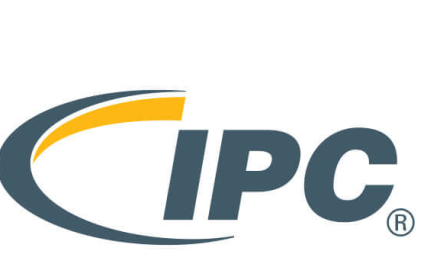The Importance of ‘Nerd 4.0’
By Michael Ford, Aegis Software
People and companies credited with the invention and introduction of cool technologies get a lot of praise and attention in the media. Under every visible iceberg of success however there needs to be a complete support infrastructure, driven by what many refer to as the “Nerds” in the organization, which often gets dismissed.
Though buried under the hype, it is often a critical enabler to the practical realization and acceptance of new technology in the mass- market. As we grapple with the true values and potential impact of Industry 4.0 in manufacturing, we need to learn some simple lessons, otherwise we will be taking two steps forward, and then one step back.
Industrial engineering in assembly manufacturing is quite a specialist occupation, with a focused mindset to identify requirements, solutions and consequences of any process changes, for example related to smart Industry 4.0 projects. It is too easy however to under-estimate what may happen when a complete paradigm shift occurs. Take for example the emergence of electric-powered cars, the pure electric type, not hybrids. We thought that the end of fossil fuel cars would happen gradually as fossil fuel resources started to run out and prices for fuel spiraled upward. Today however, we are motivated it seems more by emissions associated with health issues, not to mention global warming. With three compelling reasons now to make the transition over to clean technology, the momentum of change is accelerating rapidly.
The idea for the all-electric, clean alternative seems great in isolation. To develop such electric cars that are practical and familiar has not been so much of an issue, with models already available, from local runabouts, to fully-blown sports cars (though not much in between actually). The technology is cool and it is available, people are already using it, so job done, two steps forward, right? But no, wait, there are a lot of serious issues below the surface which have not yet been addressed. The energy capacity in batteries based on current technologies is quite limited, and they can actually be quite dangerous in certain circumstances, as well as being quite toxic. There are many ideas in the pipeline to create much larger energy capacities, with safer chemical composition, with shorter charging times, but they are not available just yet. Assuming we get there however, this leads us to the next problem, how do we charge all these new batteries? The existing electricity infrastructure will be grossly overloaded in most areas. Existing electric car chargers cannot yet utilize local electricity generation without it going through the grid. Bear in mind also that at least half the charging will take place at night, when renewable sources are producing at their minimum. Upgrading power-lines therefore may only serve to bring electricity derived in a large part from fossil fuels, which puts us then one step back. Temporarily, until electric cars become main-stream, we have to get by the best we can, with charging stations, mid-journey battery swap-out plans, or even car swaps. We now also hear about huge battery arrays that are intended to store renewable energy from sun, wind, rain and tides which can be accumulated and used to smooth out supplies. Ironically, we recently have seen how too much wind and rain can take out a complete power-grid for weeks and even months, so there is also a risk element to consider. With current technology limitations, these innovations are little more than gap-fillers until the infrastructure technology as a whole can catch up to effectively support this new electric car technology. We are not yet able to realize the potential that electric cars are ready to deliver.
The same is true in the manufacturing assembly industry. There is no single Industry 4.0 solution. Rather, it is a combination of many machine-based, process-based and transactional solutions at many layers within the factory. At the lowest level for example, based on a simple premise going back many years, data from an AOI machine can be used to measure the performance of every placement made in the line. Continuous analysis of the data with, for example a 6-sigma computerization, can expose trends due to a number of possible causes that could soon lead to a defect. Using the result as an alarm can effectively avoid defects from actually happening. This is the digitalization of an industrial engineering exercise, featuring a computerization that in effect controls machine processes by way of feedback. The principle of closed-loop systems can be applied anywhere, including for example a mechanical assembly process where one station has built into it the task of checking the work of preceding assembly steps. In each case, data is utilized between two disparate processes.
Looking at a higher layer, Industry 4.0 computerization opportunities at a site-level include Lean material logistics, where material preparation, selection and delivery is completely automated based on process-driven demand, both current and imminent. The creation and assignment of work-orders to create a routed schedule on-demand is another example. In each case, data in significant quantities is utilized from production processes, machine or otherwise, to enable the computerizations to calculate what to do, and when. There are then the inter-level solutions, where individual machines and processes obtain data from outside of their existing scope, for example materials that are coming, resource availability, and detailed information about what production units are coming to the machine in terms of product-flow both in the immediate future and throughout several changeovers to come. The optimization of the individual production processes or whole line of connected processes can ascend to the next level of effectiveness by having this information available, especially in the high-mix environment where changeover optimization is essential. We have so many ideas to put into practice, that we are surely about to take at least two steps forward in improving factory performance through the implementation of Industry 4.0, aren’t we?
Not quite. Though we see many examples already of Industry 4.0 ideas successfully implemented, these are almost exclusively within a limited and proprietary environment, or, have been implemented at a great investment of time and cost that only the largest companies can afford. We have been at the stage with Industry 4.0 digitalizations and computerizations where the ideas are outpacing the enabling infrastructure for quite some time. For a Smart Factory, Industry 4.0 or otherwise to work, the critical “fuel” is the flow of timely, accurate data from the whole multitude of machines and processes on the shop-floor. To avoid the incredible expense of doing that on a proprietary basis, the data content and flow between these processes of different types and from different vendors has to be standard. Then, only one interface is required no matter what brilliant ideas we may come up with both now and in the future. The only standard that makes sense for such an important task is a truly open, consensus-based standard, such as the IPC “Connected Factory Initiative”, the team that is currently creating, “CFX”, the “Connected Factory Exchange”.
Let’s not all find ourselves stuck at a highway service area with flat batteries. For those of you who do not yet know about CFX, it’s time to take a serious look. It is also the time for anyone with a key interest to contribute to such a standard, to stand up and be heard!












